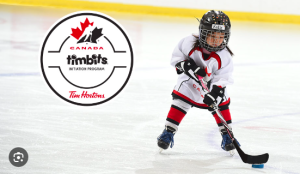4
These are difficult stories. We bear witness in this chapter to the role of sport in furthering the settler colonial projects throughout Turtle Island. Here are some supports to access in the community and from a distance:
First Peoples House of Learning Cultural Support & Counselling
Niijkiwendidaa Anishnaabekwag Services Circle (Counselling & Healing Services for Indigenous Women & their Families) – 1-800-663-2696
Nogojiwanong Friendship Centre (705) 775-0387
Peterborough Community Counselling Resource Centre: (705) 742-4258
Hope for Wellness – Indigenous help line (online chat also available) – 1-855-242-3310
LGBT Youthline: askus@youthline.ca or text (647)694-4275
National Indian Residential School Crisis Line – 1-866-925-4419
Talk4Healing (a culturally-grounded helpline for Indigenous women):1-855-5544-HEAL
Section One: History
A) The Residential School System
Exercise 1: Notebook Prompt
We are asked to honour these stories with open hearts and open minds.
Which part of the chapter stood out to you? What were your feelings as you read it? (50 words
| This chapter was deeply illuminating, filling a gap in my knowledge on residential schools and colonization that I didn’t know existed. At this point in my education, these revelations should not be surprising, but I found myself, having not expected sport and recreation to be embraced to a certain degree within residential schools. The idea that one can not be ‘indian’ and play brass instruments also stood out as evidence of the powerful role of racial stereotypes in the construction of the indigenous identity at the time. |
B) Keywords
Exercise 2: Notebook Prompt
Briefly define (point form is fine) one of the keywords in the padlet (may be one that you added yourself).
| The Indian Act (1876) is a piece of Canadian law that has historically been used to monitor and control Indigenous populations. It dictates how the federal government interacts with Indigenous communities, however, it started as a policy of assimilation with previous versions of this act outlawing important cultural practices, restricting mobility and rights, and generally criminalizing Indigenous populations. |
C) Settler Colonialism
Exercise 3: Complete the Activities
Exercise 4: Notebook Prompt
Although we have discussed in this module how the colonial project sought to suppress Indigenous cultures, it is important to note that it also appropriates and adapts Indigenous cultures and “body movement practices” (75) as part of a larger endeavour to “make settlers Indigenous” (75).
What does this look like? (write 2 or 3 sentences)
| This looks like the erasure of the roots of body movement practices and their connections to healing and medicine. It is the ongoing ‘Muscular Christianity’ that is still present in sports which continues to equate competitiveness and performance with manliness and nationhood. This could also look like a lack of recognition for indigenous sport and indigenous led leagues or teams. |
D) The Colonial Archive
Exercise 5: Complete the Activities
Section Two: Reconciliation
A) Reconciliation?
Exercise 6: Activity and Notebook Prompt
Visit the story called “The Skate” for an in-depth exploration of sport in the residential school system. At the bottom of the page you will see four questions to which you may respond by tweet, facebook message, or email:
How much freedom did you have to play as a child?
What values do we learn from different sports and games?
When residential staff took photos, what impression did they try to create?
Answer one of these questions (drawing on what you have learned in section one of this module or prior reading) and record it in your Notebook.
| What values do we learn from different sports and games?
In looking at the recent political context between Canada and the US as well as the recent world cup finals in hockey between the two countries it becomes clear that sports are often an expression and tool of promoting nationalism and patriotism among the public. This is further supported in the “The Skate” story which highlights how post world war two hockey became more than just an activity for fun, transforming into an expression of national identity and a source of pride for many. At these games, the ongoing tensions between Canada and the US were exceptionally visible, with the American national anthem being booed.
|
B) Redefining Sport
B) Sport as Medicine
Exercise 7: Notebook Prompt
Make note of the many ways sport is considered medicine by the people interviewed in this video.
|
C) Sport For development
Exercise 7: Notebook Prompt
What does Waneek Horn-Miller mean when she says that the government is “trying but still approaching Indigenous sport development in a very colonial way”?
| Canada has and continues to approach Indigenous sports development in a colonial way by not acknowledging or prioritizing indigenous athletes. They do not gather data on their participation at elite levels like the olympics and athletes report major experiences of racism and discrimination. Additionally, there have been little to no efforts to improve indigenous peoples and communities access to sport. Competitive organized sports at an elite level are extremely expensive, something many families can’t afford or access, especially for the more remote reservations. As such, Waneek Horn-Miller calls for a shift in the way the government approaches indigenous communities to be that of collaboration, working together to create meaningful and substantive change. |
Exercise 8: Padlet Prompt
Add an image or brief comment reflecting some of “binding cultural symbols that constitute Canadian hockey discourse in Canada.” Record your responses in your Notebook as well

This image includes several cultural symbols that tie hockey to the Canadian identity. Not only is this a collaboration between Hockey Canada and Tim Hortons, two major canadian hockey-related institutions (Tim Horton being a professional hockey player himself) but it is also in support of a youth “initiation program” into the sport, signaling the social importance and almost expectation of childhood involvement in the sport. |
Section Three: Decolonization
Please see the major assignment for this half of the term in the final section of this chapter.

